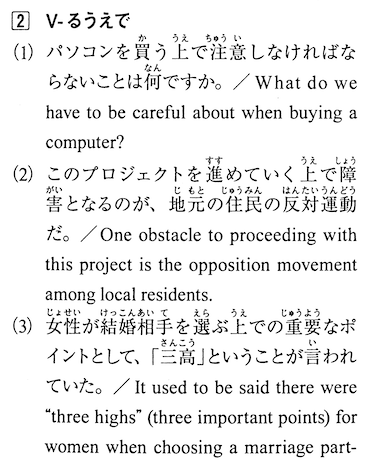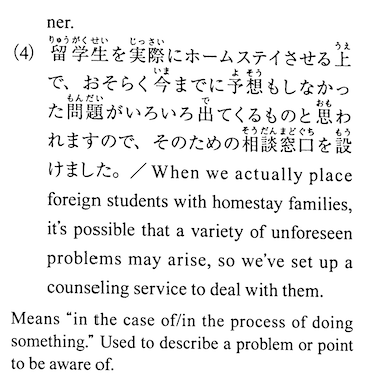We are working on making our search function far more effective in the near future. In this thread, over 70% of the grammar points that people mentioned not being here are actually already on the website. This is not the fault of the user at all, but the fault of the robustness of our search system. For N4 and N5 at least, we will soon implement search parameters that will alleviate this, for the other levels, it may not be as quick, but we absolutely intend to do it as soon as possible.
I think it’s a question of ‘do we need to make search better or do we need to split up some of our entries?’
I would much rather have separate entries for each grammar point, because that means more practice sentences for the SRS. There have been moments in the past where different usages of a similar looking grammar point have been lumped together in one entry (for example) and that means that you only get half the practice with each of the usages. It kinds of breaks the way SRS is supposed to work (in my opinion).
〜る上で (as opposed to the 〜たうえで you already have).


Not sure if this counts, but なら at the beginning of a sentence means “then”. I don’t think that specific usage is on here.
The sentence I ran into was “…そう。なら、本気で殺してあげる。” which means “I see. Then I’ll really kill you.”
I can’t find this particular instance on Bunpro.
かと言うと - you would think that ~ but (that is not right) via DIJG page 114.
Example: 日本人はみんな寿司が好きかと言うと、そうではない。
I came across this in a light novel I’m trying to read but couldn’t find it in Bunpro, although I found it in my Dictionary of Intermediate Japanese Grammar:
とする(1) and とする(2)
Does Bunpro have this and I just didn’t search correctly?
まして/ましてや
前もって
not sure if they might be discussed during other grammar points, but couldnt find them via search
- となると
- いっさい … ない
且つ
てまで

Hi all, apologies if this is not the correct forum and happy to be redirected.
The very first grammar point within Quartet 1 textbook Lesson 1 (といえば) is not included in the Quartet I [Grammar] Deck.
がため(に) being a more old fashioned written form meaning “because” - e.g., 自分のような女が母親であるがため (this is from the sentence I saw this in)
んがため(に)being a more old fashioned written form meaning “in order to” - e.g., 買わんがために
Sorry if it these are mentioned in this thread already. I had a quick look and I think they aren’t but I might have missed them.
Got this one 
Whoops - thank you!
One that I just spotted in the wild that I think would make a good addition to Bunpro: AといえばA. This isn’t the same one in A Handbook of Japanese Grammar Patterns or the Dictionary of Basic/Intermediate/Advanced Japanese Grammar. I’m referring to when the same chunk occurs before and after といえば, as in this explanation.
Interestingly, unlike that page, the quote that I found in the wild didn’t have が or a contrastive second clause. It’s from this article about 和算. The sentence occurs at the bottom of the first page: 「これに対して、日本古代の数え方は十進法ですから、これが特徴といえば特徴です。」
(my company give me a premium access to busuu.com)
Today I faced a new grammar point I did not know, and that I couldn’t find on bunpro: つきの
It says that this grammar point can give a new function to an object.
カメラ付きの携帯電話 is a portable phone with a digital camera
The kanji were from my ime, looking it up in kanji or hiragana is a miss on bunpro. The grammar explanations on busuu are pretty dry.
Another examples bellow:
This is just 付く in a nominalised form used as a suffix. See this:
㋑名詞の下に付いて、そのものが付属していることを表す。
And the definition in English as well.
I think the meaning is fairly clear without explanation.

![[Verb Stem] +っこ+する Grammar Rule | LTLN 8](https://img.youtube.com/vi/Lv42o-A55y0/hqdefault.jpg)


